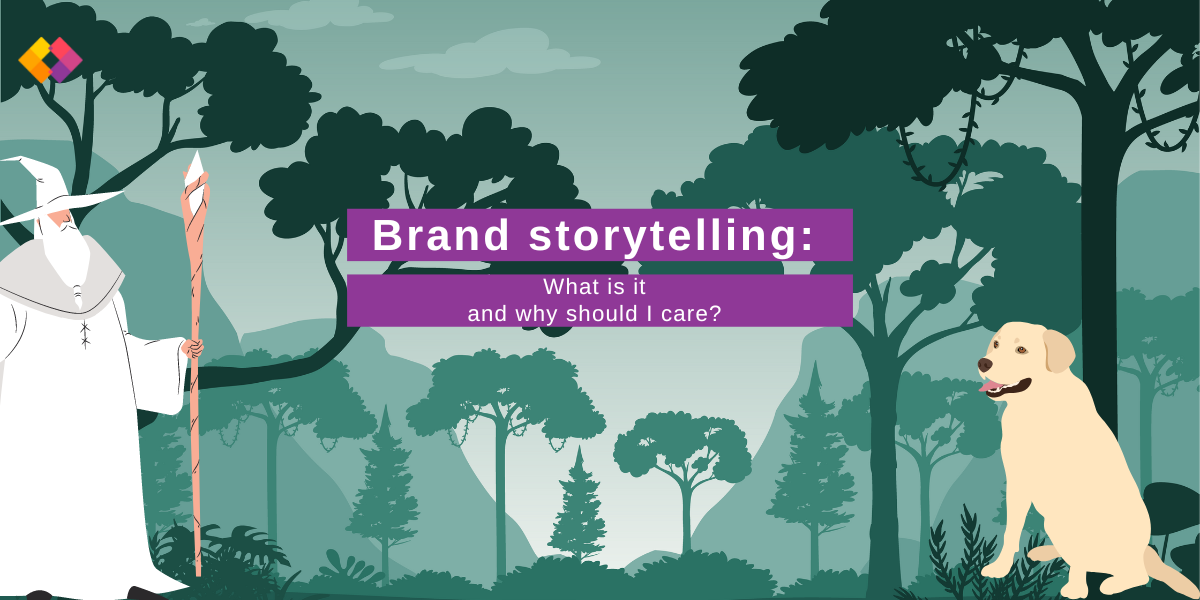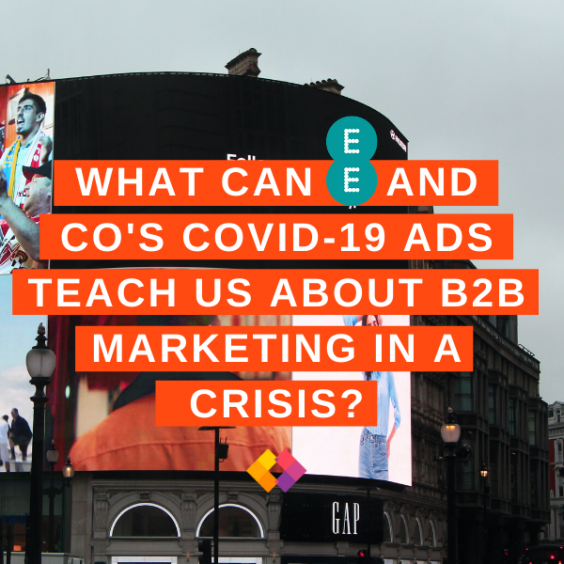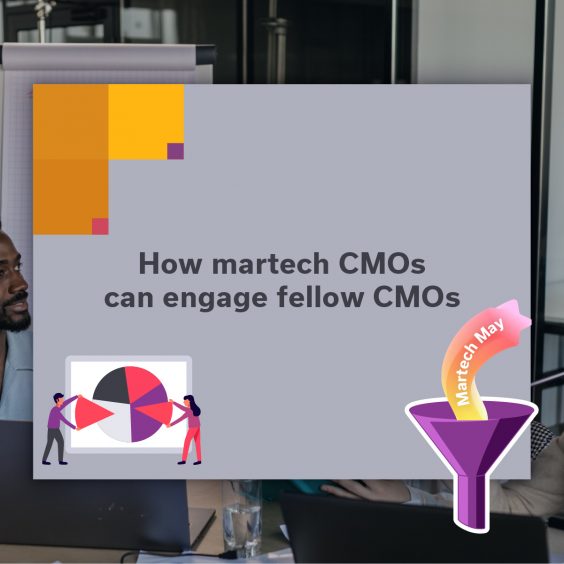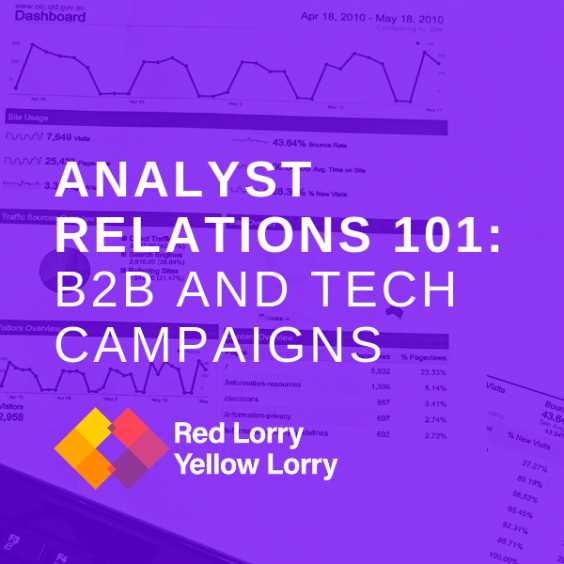Advertising research reveals that the consumer’s emotional response to an ad has a far greater influence on their reported intent to buy a product than does the ad’s content.
– Peter Noel Murray Ph.D, an emotion and behavior change expert
Open up LinkedIn, and you’ll see thousands of posts about brand storytelling – largely by and for b2c marketers. Not to be confused with brand purpose (that’s a separate blog – which you can find here) in a nutshell, brand storytelling is the art of crafting a narrative that connects your brand with customers and prospects. And yes, as a b2b tech marketer, you should definitely be thinking about this as part of your marketing strategy!
Brand storytelling – b2b style
It’s no secret that there has traditionally been a dearth of brand storytelling in the b2b tech landscape. This is largely because effective stories are built on eliciting an emotional reaction from an audience, and there’s a perception that this is difficult to do in a b2b context when you’re selling complex solutions to businesses rather than flashy products to individual consumers. Basically, the idea is that it’s tough to get (too) excited about cloud storage compared to the latest Nike trainers or Stone Island hoodie.
This is only partly true. Emotions such as fear, uncertainty, risk, reassurance and trust are all at play in the b2b world. These emotions might not be quite as obvious, but the best b2b storytelling campaigns find a way to harness them and bring business technologies to life.
As Dave Harland, The Word Man says:
B2b doesn’t have to be boring. But sadly, most of it is. Especially on social media, where lazy, cliched copy and stock imagery dominate. There’s far too much shoe-horning of multiple messages into single ads. And lots of over-reliance on technical features rather than lovely emotive benefits.
But there are examples of b2b brands that use a mixture of storytelling, intrigue and surprise in their ads. Hiscox Business Insurance is one of my favourite examples. It creates relatable analogies that give real-world context, making their traditionally very ‘dry’ product way more interesting.
So, what’s the secret sauce that differentiates a compelling brand story from a mediocre, forgettable one? Using a few carefully selected cinematic analogies, I’m going to take you on a journey to help you answer this age-old question.
What makes a compelling story?
There are a few key components that will help turn your brand story from a dud into a box office smash:
- Personality – No one expects a b2b brand to have personality, so the ones that do really stand out. Don’t be afraid to get creative and develop a brand personality that aligns with your values. This personality must then be extended across your visual identity and tone of voice.
- A personal touch – Your target audience wants stories that are tailored to them. While you may not be able to solve their dating issues or decide what to watch for them, at least make their working lives easier by telling stories that are personal to their situation.
- Emotions – Being emotive is a surefire way to differentiate your brand from the competition and engage prospects. Make the ‘Marley and Me’ of b2b brand storytelling and you’ll be unforgettable.
- Conflict / struggle/ pain – If Luke Skywalker had turned up to Yoda’s training course and turned into a Jedi overnight, would his journey have been as interesting? Would The Empire Strikes Back still be seen as the best Star Wars film? Every b2b buyer is facing some kind of struggle. Stories are much more powerful when you highlight key challenges and explain how they can be overcome.
- A visual spectacle – We know that the visual element is often what first entices audiences in and helps keep their attention. Engaging graphics and imagery can really bolster your brand storytelling, bringing out your brand’s personality and creativity.
…And what makes a forgettable story
The b2b market is full of brands that focus on product features and push out content that isn’t engaging at a human level. As the old adage goes “you have two ears for listening and one mouth for talking, use them in that proportion”. Too many b2b brands forget this, and focus on bombarding customers with sales messages rather than listening to their needs and creating an emotional connection.
Still not convinced? Here’s what our head of content Sam Pudwell thinks:
Many b2b tech brands still seem to forget that they’re selling to people, not robots. You wouldn’t engage with bland, self-serving content in your personal life, so why would that work in a b2b setting? Effective b2b brand storytelling doesn’t mean you suddenly have to turn into the next Roald Dahl. All it takes is a change of mindset. Think about who you’re talking to and the specific business challenges they’re facing – then build a compelling and authentic narrative that connects with customers and prospects on an emotional level. Do that, and you’ll live happily ever after.
Brand storytelling strategy and how to slay at it
So, how do you conjure up magical brand storytelling like some b2b Gandalf?
Here are a few tips and tricks to keep in mind.
- Identify a hero – human interest stories are much more interesting. Every story has a hero – and in most b2b cases it’s the customer that showed everyone else the way. Shining a spotlight on customers will help to build trust and convince prospects.
- Paint a picture – don’t just dive into product information. Illuminate the current situation by providing context and highlighting a key challenge or pain point that audiences can relate to. Remember, if there’s no drama, there’s no story.
- Provide a solution – Every good story needs a resolution; an ending with a positive outcome that will convince prospects of your expertise. Showcase how a challenge can be overcome.
- Look internally – If you don’t have case studies or testimonials, consider using employees to tell your story. That could be the latest junior hire, or the CEO. This will humanise your brand and add authenticity.
- Finally, you want to wrap this all up with the grace and decorum of Rowan Atkinson in Love Actually (you know the scene) into an appropriate medium in which to deliver to your audience. Then promote the shit out of it.
This final step highlights the importance of medium and delivery. Vital cogs in the storytelling machine. Make sure you know where your audience is – channel-wise, not in the Apple privacy sense – and deliver your story through the right channels.
Will your story be told in words on a blog or infographic, through social media such as LinkedIn, using video or audio, or maybe even by VR in web 3.0? (Shameless blog plug here).
All that’s left to do now is get started. So, to round off this blog, a motivational quote from one of my current favourite public speakers, Troy Hawke of the Greeter’s Guild
Shoulders back, get in there and smash it.
Want to learn how we can help your brand navigate the b2b marketing and communications landscape? Visit our contact page or drop us a note at hello@rlyl.com.



